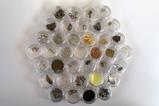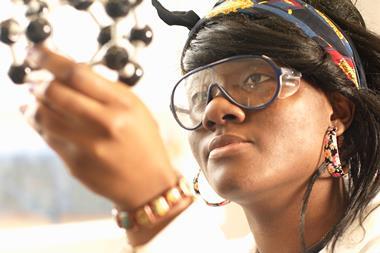Showing students that science can be inclusive

Stephanie Knezz loves being in the chemistry classroom. First as a student, next as a teaching assistant during her PhD and now as an associate professor of instruction in the department of chemistry at Northwestern University, US.
For Knezz, the early connections she made with excellent educators while studying at a small liberal arts college built a firm foundation towards graduate studies in chemistry that may not otherwise have happened.
‘I loved my professors,’ she says. ‘They were the ones that made the whole experience feel affirming and validating and furthered my interest.’
Knezz is creating an analogous nurturing and inclusive classroom for her own students, as the student newspaper the Daily Northwestern recently highlighted.
Leveraging vulnerability
Early in her academic career, Knezz made the decision to share aspects of her identity with the students in her classroom, with this openness extending to her official university bio.
As a ‘queer woman’ and ‘first-generation college student’ Knezz aims to disrupt the power dynamics that can be present in the classroom so that she can better connect with her students.
‘I actually don’t think it even requires queerness or any specific identity,’ says Knezz. ‘I think that just sharing invisible things about yourself makes you vulnerable in a position where you have power.’
While Knezz recognises that this feeling of vulnerability can be associated with a ‘loss of authority’ by some educators, this hasn’t been her experience.
‘The more that I’ve shared and the more vulnerable I’ve been in the classroom, the greater the trust that’s developed between me and my students,’ she says. ‘I think it’s just a matter of lessening that distance between the person who’s holding power and authority and the people who feel kind of powerless.’
Knezz’s advice to educators is that by ‘leveraging your own vulnerability’, it is possible to build more inclusive classrooms where they can better connect with students.
What’s in a name(d reaction)?
Knezz is particularly driven to affirm a sense of identity and belonging for people who have been historically unrepresented or excluded from science. One element of this approach is to actively acknowledge the ‘gatekeeping’ that has been present in science while remaining positive about its future. Knezz tells her students that ‘studying science is a privilege and it’s a privilege that used to only be afforded to a certain group of people because of systematic exclusion’.
The select group of people to whom this privilege was historically afforded is perhaps most clearly evidenced by the names of famous scientists who are credited with fundamental discoveries in chemistry.
In organic chemistry, where hundreds of reactions have been named after the chemists who first described them, the vast majority honour white men. In terms of one dimension of diversity, only two have been ‘unambiguously’ named after a woman; that’s the Catellani and Goldberg reactions should you ever need this answer in the most niche game of trivia you’re ever likely to play.
While some educators take the approach of highlighting diverse scientists in their courses – an approach of which Knezz is a fan – she explains that ‘those examples are just not authentically available’ in the fundamental or general chemistry courses she teaches because ‘most of it is old stuff.’
For Knezz it’s a matter of framing.
‘If you just don’t acknowledge the gatekeeping of the past, you’re going to be dodging around it constantly when you’re trying to teach your class,’ she says. ‘It’s like the elephant in the room.’
As someone who is aware of and enacts inclusive pedagogy, Knezz instead puts up a slide on the first day of class featuring the faces of the people who the reactions she teaches are named for and speaks directly to the students.
‘[I tell them] only a small group of people were privileged enough to make an observation, probe that question and form a conclusion,’ she says. ‘And as a result, during that time, all of the science is named after that group of people that had that privilege. But now we all have this privilege cause we’re all sitting in the room, and we can cultivate this really powerful process.’
Knezz shares that her aim is not to ‘mitigate discomfort but actually to empower people and make them recognise how vital their participation actually is, especially for underrepresented students.’

















No comments yet